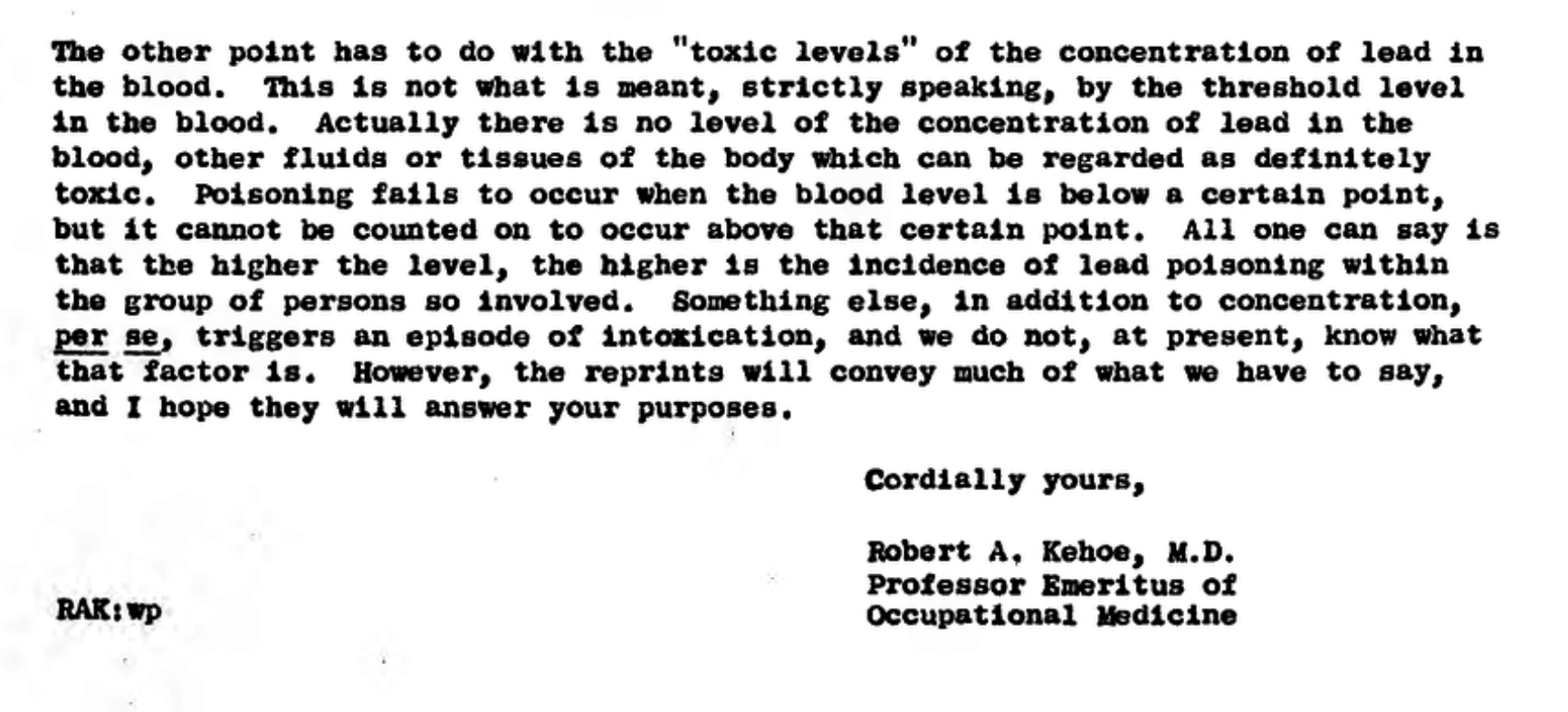Using ToxicDocs in the Classroom: The Tetraethyl Lead Controversy, Part IV
Students in Columbia's Corporate Behavior and Public Health class spent the first few weeks of the semester using ToxicDocs to research the case of tetraethyl lead, which was added to gasoline between the 1920s and the 1960s despite serious concerns from public health officials. This is the fourth in a series of posts highlighting their work. Check out the first post in the series here the second here, and the third here. We will continue posting student research over the coming days, piecing together a more complete picture of the TEL controversy and demonstrating how ToxicDocs can be used in the classroom.
Several students focused their investigations on the role Dr. Robert Kehoe played in promoting leaded gasoline. You can read about the background of Dr. Kehoe here. Today's contribution comes from Klara Nedrelow, a history major in the class of 2019.
I began with letters between Dr. Robert Kehoe and Dr. William Davin, which explain Dr. Kehoe's involvement in the Lead Industries Association and his role as the Medical Director of the Ethyl Corporation, a company created by General Motors, DuPont, and Standard Oil. Unlike many of the other industry researchers, Kehoe would warn about the toxic hazards lead paint posed to children, however he would do so mostly in private. Kehoe's unwillingness to publicly warn about the dangers of lead paint were due to the fact that his research was funded by the Ethyl Company, which produced tetraethyl lead for gasoline. He only began to publicly discourage the use of lead paint after the broader medical community had recognized that it could cause lead poisoning in infants and toddlers who ingested the paint. The lead industry did not acknowledge the dangers of lead paint over half a century after the first articles of child lead poisoning were published.
I was able to find a review about Dr. Kehoe's views on lead toxicity written by Herbert L. Needleman of the University of Pittsburgh School of Medicine. In the article he discusses Kehoe's prominence in the field as the principle industrial expert and how Kehoe's words were taken as the final opinion by lead industry representatives. Virtually the only source of research support on lead from the 1920s-1970s came from industry treasuries, and most of it was directed to Kehoe, giving him a monopoly over all of the lead data available. Despite this massive resource, Kehoe often gave unclear and singular interpretations. When he was asked to consult for General Motors in 1923 when workers died at the Dayton plant, Kehoe found lead in the blood of workers who did not handle TEL and concluded that lead was a "normal" constituent of the human body. When he was challenged that his control group (the workers who did not handle TEL) was contaminated, he went to rural Mexico and tested the blood, urine, feces, soil, water, and tableware of villagers and found lead in their blood and tableware. He still came to the conclusion that lead was a normal component of the human body and dismissed the troublesome finding of measurable amounts of lead in the dish ware. In Senate hearings on the Clean Air Act in 1966, Kehoe was one of the key witnesses before the Muskie subcommittee regarding air and water pollution. He testified that enough was known about TEL toxicity to allow the amount of TEL to be increased without risk, claiming that, "...the evidence at the present time is better than it has been at any time that this is not a present hazard." When asked if there could be a better substitute for lead in gasoline Kehoe responded that there was no evidence that it had introduced a danger in the field of public health, claiming that there was no way for man to avoid any kind of lead absorption.
I found an additional document that further exposes Dr. Kehoe's role in "playing down" the potentially dangerous effects lead had on children. The document discusses how Kehoe neutralized any attempts to nail down a specific, concrete level of lead exposure that could be deemed toxic. This was also evident in Kehoe's ambiguous response to Dr. Davin about toxic levels of lead in blood plasma. The document above also describes how Kehoe significantly stalled pediatric research on the effects of lead on children because he asserted that absorption of lead was equivalent in both adults and children, this assertion endured into the seventies.
These additional documents shed light upon how medicine and research were corrupted by the lead industry, causing the reprehensible withholding of vital data regarding the health and well-being of American citizens. The original post about the correspondence between Kehoe and Davin is much more clear after learning about Kehoe's compromising entanglement in both medical research and the Ethyl Company.

